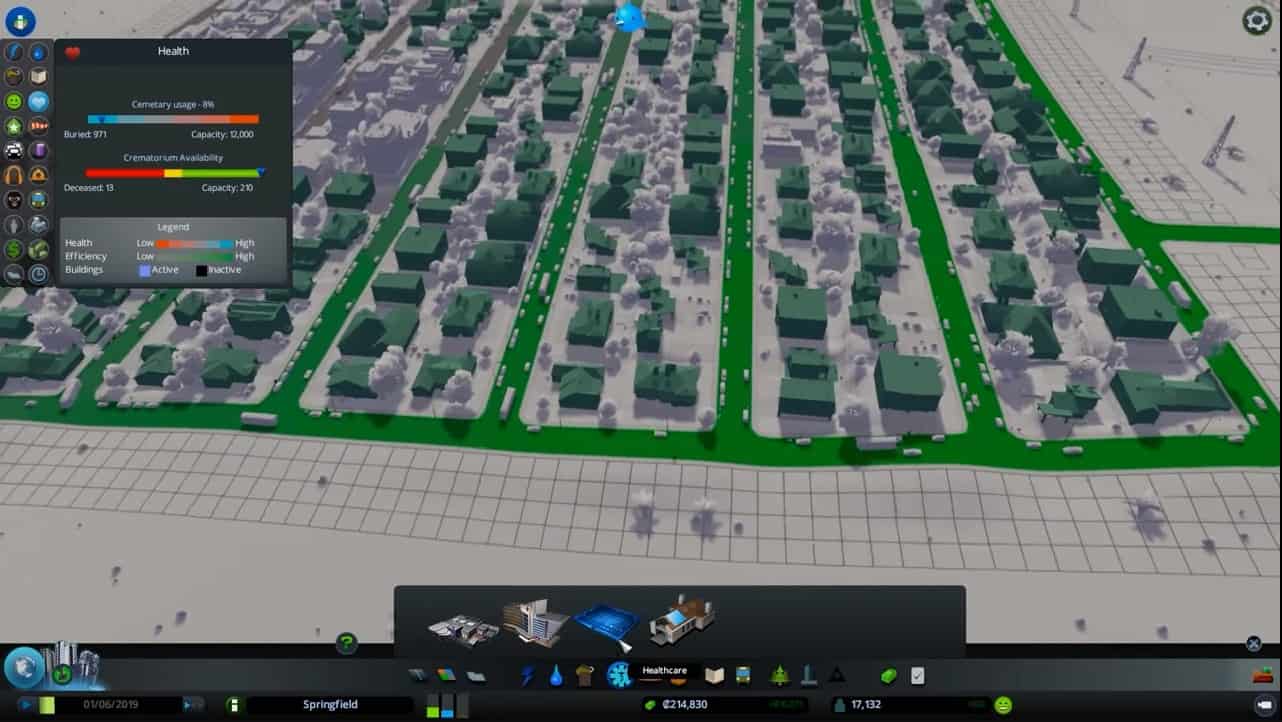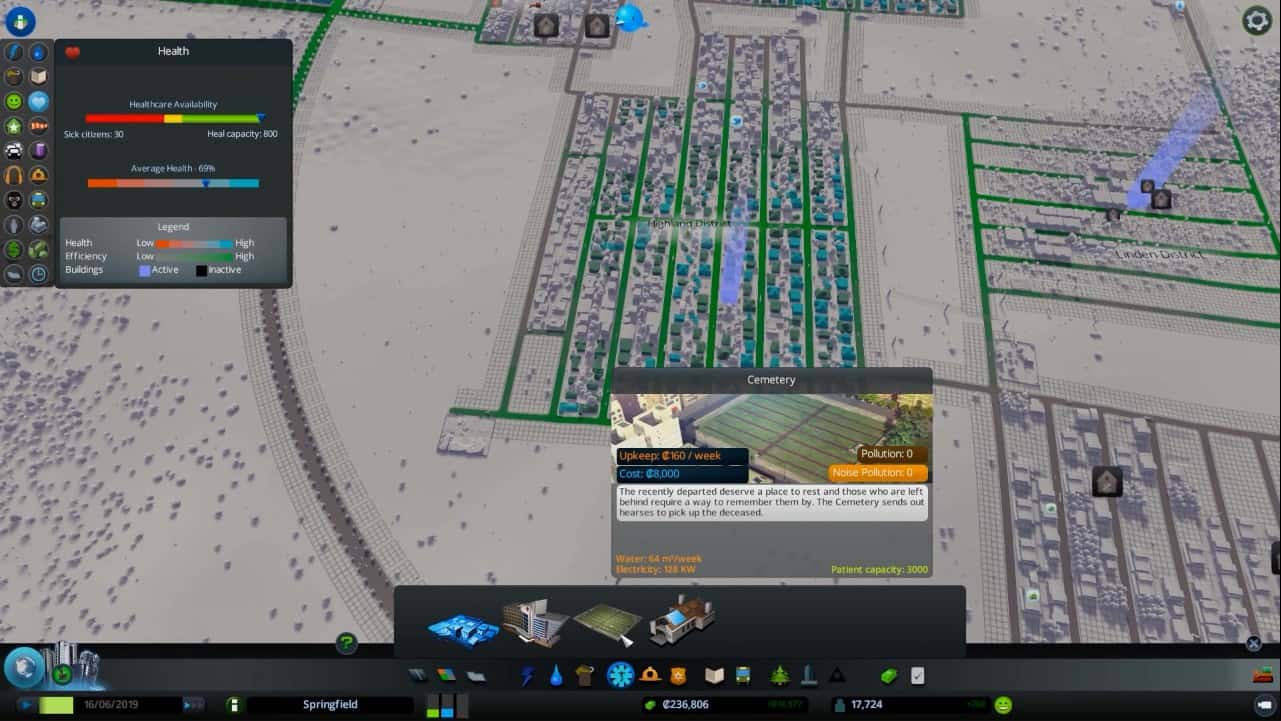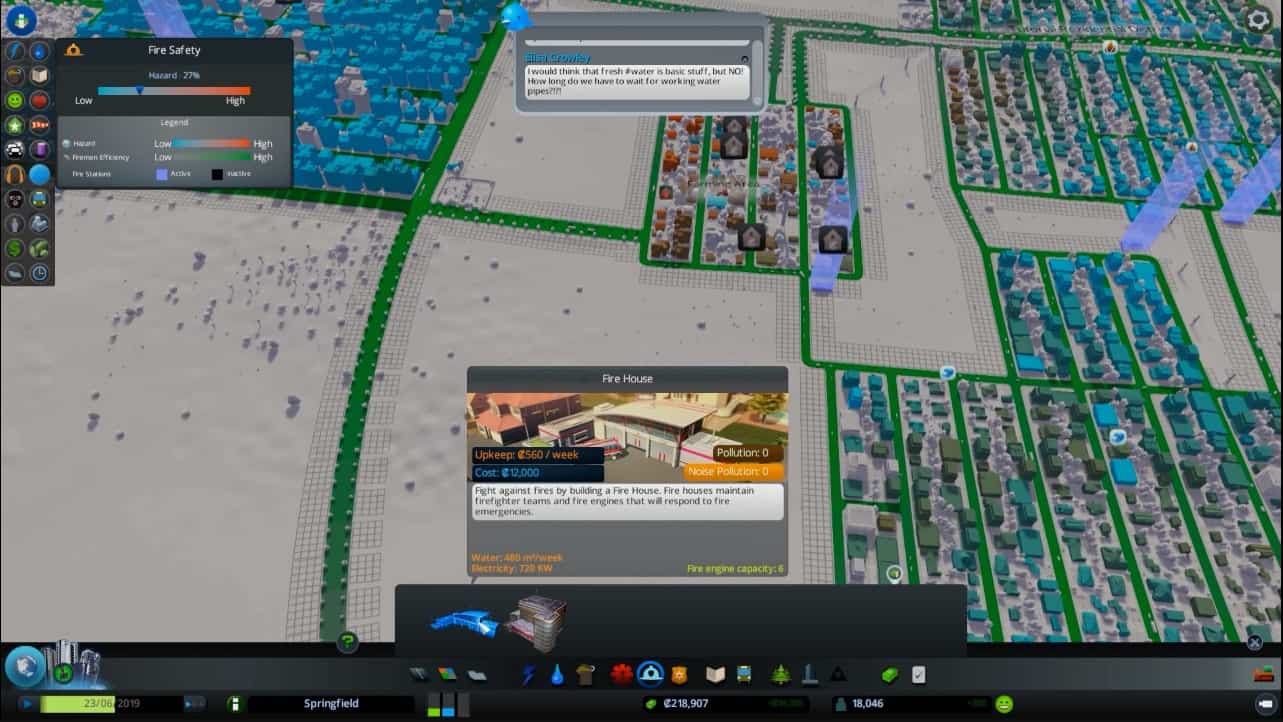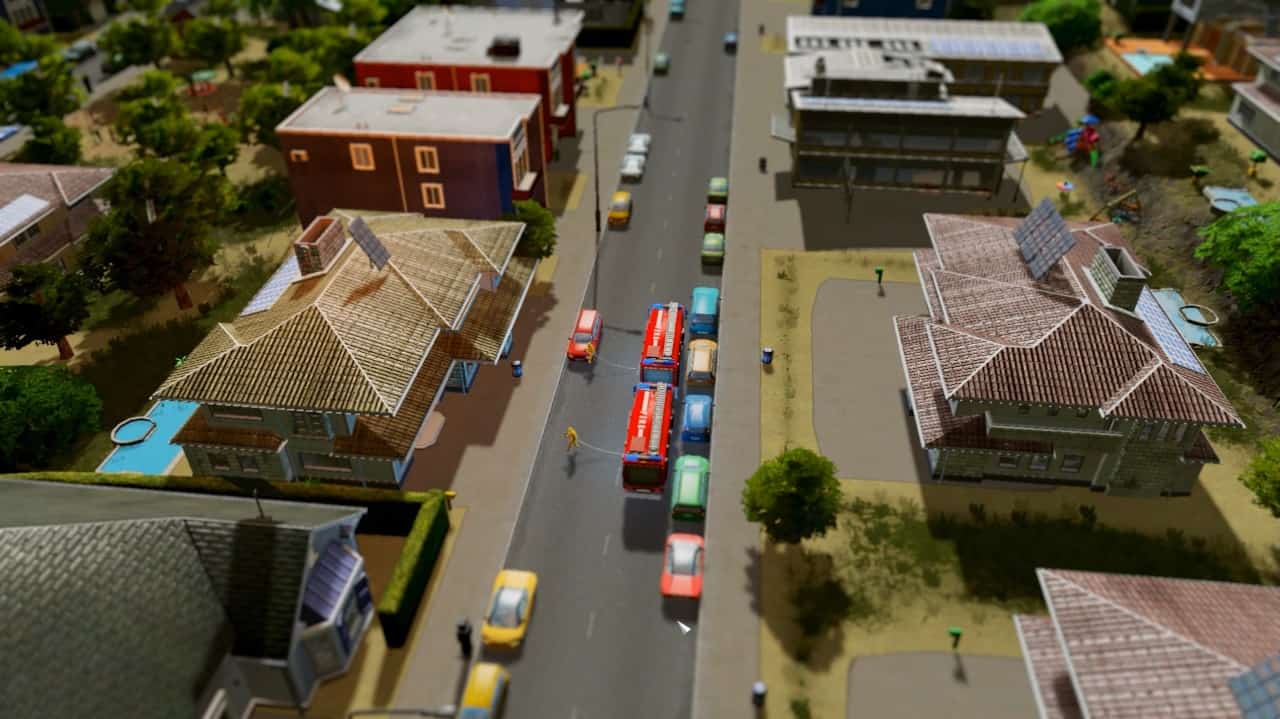Health and Safety are significant parts of any city, and in Cities Skylines, there is no exception to this rule. Doctors and Police are the foundations of your city, so they are essential if you want your city to live in peace without crime or disease.
In this guide, I will discuss all available assets you can use to introduce healthcare and safety measures within your city.
Cities Skylines Healthcare Services
These facilities help improve the overall health of your citizens, improving life expectancy and working to heal the injured. Hospitals are thus the most important part of your city as the lives of the citizens are at stake here.

Medical Clinic
The clinics are the cheapest asset you have. They are small, and one patient takes up one bed at a time. Due to their sheer small size, their reach through your district is also small. While people would prefer to walk to Medical Clinics, they still have ambulances that they can use to reach out to Medical Clinics.
Medical Clinics have a capacity of 8 ambulances and beds for 100 patients. For small districts, as stated, having 100 patient clinics covering the city is also a good enough option.
Hospitals
The hospitals can completely cover medium-sized districts in Cities Skylines. With the larger range covering them, it is an excellent upgrade from the clinics to hospitals. This would also allow you to remove a few clinics, which can take some load off the city budget.
Unfortunately, one of the drawbacks to the hospitals is that they rely a lot more on ambulances than the medical clinic, even though patients can still walk to it. This adds to the traffic of the city.
Medical Laboratory – High Tech Buildings DLC
This building is just a lab, but it can still take up patients and have a similar range as a hospital. Medical Labs do not use ambulances and thus require patients to enter with their private vehicles or as pedestrians.
The only vehicles that can drop off sick patients are the helicopters.
Medical Centre
This is the most important building in the entire game, and it is the most difficult one to manage as well. Once you construct this building, you unlock the monument called “Medical Centre,” even though this monument has a capacity of 50 ambulances and a thousand patients – people will stop getting sick. This validates why this is the most important structure to build.
Cities Skylines Deathcare Services

The cycle of life ends with death. Civilians of your city will face death on a day-to-day basis. If kept unregulated, the dead bodies would start piling up, and you more than likely do not wish to turn your city into a ghost town.
The following are the options you can use to deal with the dead and lost souls. Unlike Medical Services, Deathcare Services do not even have a range, and they work city-wide. This can lead to issues where body pickups can get delayed due to traffic.
Cemeteries
Unfortunately, in Cities Skylines, deathcare works very similar to garbage. Yes, you read that correctly. The dead are treated like trash (literally) in the city-building game, with the only exception being that instead of garbage trucks, hearses will come to pick up the dead.
Cemeteries, hence, are analogous to Landfills in the game and, like them, will fill up once enough dead are buried. At a time, a single Cemetery can contain up to 3000 dead bodies. However, unlike Landfills, building a cemetery near your residential area will not cause pollution or upset citizens. It is preferable for them if there is a local cemetery nearby.
Crematoriums
Similar to incinerators for garbage, Crematoriums will burn the dead. The only exception is that crematoriums will not burn dead people to produce electricity.
Crematoriums are an excellent replacement for cemeteries as they take up much less space (tiny buildings) and also have no real limit as the dead bodies keep on getting processed. Otherwise, there is a limit that it can only keep 105 bodies at a time. However, they will have a fewer amount of hearses to send out.
Much like cemeteries, and unlike incinerators, crematoriums will not cause illness or unhappiness amongst residences near them, so it is usually advisable to build them within the city.
Cryopreservatory – High Tech Buildings DLC
It works similarly to Crematoriums. The main goal here is not to burn the dead; the citizens now have a long-term investment to make here. Cryopreservation is a method of freezing the bodies to preserve them so that later down the line if the technology to revive them ever becomes available, they can be brought back alive.
Just like Crematoriums, they do not take up a lot of space, and they have more hearses and capacity than Crematoriums.
Cities Skylines Safety Services
Civilians need safety measures as well, and just like Medical Services – Safety cannot be ignored either. The two main things that are covered under Safety are Fire and Crime. The following establishments are the ones that would be able to deal with either of them but require at least one for each problem.

Fire House
The most basic type of fire-fighting service building is the Fire House. These are small depots that will dispatch fire engines to areas nearby. Unfortunately, they don’t have much coverage, so initially, you will need to be building a lot of these.
It is important to note that Industrial and commercial zones have a higher probability of fire hazards. Fire houses are cheaper than stations and are great for early-game builds. Unfortunately, there’s only a capacity of 6 fire engines, and the upkeep is high for Fire Houses.
This means that in the beginning, there shouldn’t be a lot of Fire Houses to start with, or it can strain your economy. You cannot spam them like with Medical Clinics or other minor services to boost health and safety in Cities Skylines.
Fire Station
The Fire Stations have a much more extensive coverage area and more fire engines available. For this reason, at the later stages of the game, you should convert your Fire House into a fire station.
Like Fire House, you want separate fire stations for your residential and industrial/commercial zones. The Fire Engine capacity significantly increases from Fire Houses carrying 25 Fire Engines, which is excellent for not only the coverage radius but the deployment rate as well. A single station can easily handle several fires at once without many issues due to its capacity.
Fire Watch Towers – Natural Disasters DLC
They are used to watch for any fires that can break out, especially in forests. Fire Towers detect fires and then inform; however, they cannot do much. This can be changed if you own a Fire Helicopter depot, which also comes from Natural Disasters DLC. You can call out Fire Helicopters to take out the fire in Cities Skylines.
Police Station
Police Stations are great for beginning patrols and crime monitoring. They have a total capacity of 10 Cars and 20 Prison Cells. Since they have a smaller radius, the Police stations need to be a little spread out. Still, it is not a good idea to place many of them simultaneously. The more police stations are constructed, the more police cars will start patrolling regions, adding to the traffic.
Police Headquarters
A bigger upgrade from Police Stations, the Police HQ has a large radius covered with more cars and prison cells. The Police HQ comes with 25 patrol cars and 60 prison cells, and if you built a Police Helicopter Depot from Natural Disasters DLC, you’ll be able to bring prisoners through the sky as well.
